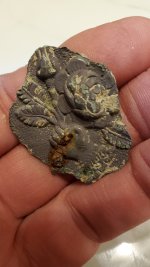I know personally that the Fisher family has researched and searched for the Beale Code treasure. In fact, one of them told me that they believed it existed, and that it was under a gas station (I believe they said somewhere in Virgina).
I wonder if they are still searching for it?
Anyone else researching this legendary treasure?
What is the current status?
I wonder if they are still searching for it?
Anyone else researching this legendary treasure?
What is the current status?



 B. T. not found... Mel didn't find it... many still looking... ask
B. T. not found... Mel didn't find it... many still looking... ask  Peter's e-mail addy is:
Peter's e-mail addy is:  You're not going to start crying now are you? Let's examine your last post and look at the incredible leaps into the conclusionary gulf that you make, shall we?
You're not going to start crying now are you? Let's examine your last post and look at the incredible leaps into the conclusionary gulf that you make, shall we? Actually what Beale's letter to Morriss states is:
Actually what Beale's letter to Morriss states is: The problem with the statements contained within the quote directly above, is that it ASSUMES that the story is true, in the face of all the evidence to the contrary, and proceeds upon that assumption. You state that the "key" was lost in a mail robbery as if it is fact. You have no direct knowledge that such a key ever actually existed, and if so, that it was ever lost in a mail robbery. And you still have yet to respond to the logical statement that If the author of the pamphlet is the individual that numbered the ciphers, and the ciphers themselves contain a mention as to which number they are, then the logical conclusion is that the author of the pamphlet and the author of the ciphers are one and the same. Instead, you just keep plodding along under the assumption that the story is true completely ignoring that logic. So, the answer to your question is if the $750,000 never existed to begin with.
The problem with the statements contained within the quote directly above, is that it ASSUMES that the story is true, in the face of all the evidence to the contrary, and proceeds upon that assumption. You state that the "key" was lost in a mail robbery as if it is fact. You have no direct knowledge that such a key ever actually existed, and if so, that it was ever lost in a mail robbery. And you still have yet to respond to the logical statement that If the author of the pamphlet is the individual that numbered the ciphers, and the ciphers themselves contain a mention as to which number they are, then the logical conclusion is that the author of the pamphlet and the author of the ciphers are one and the same. Instead, you just keep plodding along under the assumption that the story is true completely ignoring that logic. So, the answer to your question is if the $750,000 never existed to begin with.


